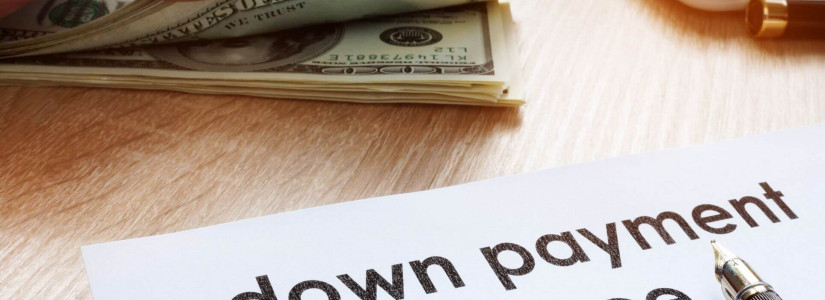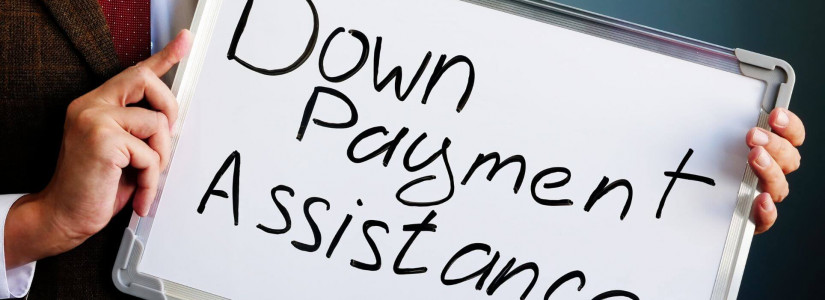How to Get Help With Down Payment Costs for Buying a Home
However, there's good news: You don’t always need a huge sum of money upfront, and there are programs that can help you cover these costs.
The Truth About Down Payments
A common misconception is that you need to save 20% of the home’s price for a down payment — but that’s not true. Many loan options today require much less. For example:
- In 2023, the median cost of a home was around $422,800. A 20% down payment would require over $84,000
- In pricey areas like California, where the average home costs over $900,000, saving 20% means needing $180,000. For many people, that feels impossible.
Fortunately, you don’t need 20%. According to recent data, first-time buyers typically put down between 6% and 10% of the purchase price.
Thanks to different loan programs and assistance options, it’s possible to buy a home even if you don’t have tens of thousands saved.
Loan Options Requiring Smaller Down Payments
There are several types of loans that work for first-time buyers — and some require very little upfront payment:
- FHA Loans:
- Backed by the Federal Housing Administration, these loans only require a down payment of 3.5% (if your credit qualifies).
- Using this, you’d need about $14,800 for a median-priced home instead of $84,000.
- Conventional Loans:
- Loans such as Fannie Mae’s HomeReady and Freddie Mac’s HomeOne require just 3% down for eligible buyers.
- About half of first-time buyers use these loans.
- VA Loans:
- If you’re a veteran or active military, you may qualify for loans that don’t require any down payment at all.
What You Should Know About Low-Down-Payment Loans
- Mortgage Insurance:
- If you borrow more than 80% of the home's price, you’ll likely need mortgage insurance. This can add extra monthly costs until your loan balance drops below that level.
- Higher Loan Amounts:
- A smaller down payment means borrowing more money, which can lead to higher monthly payments and more interest paid over time.
Down Payment Assistance Programs Can Help
If you’re worried about saving enough for a down payment, assistance programs are available to bridge the gap.
These programs can help you meet minimum down payment requirements, cover closing costs, or let you pay more upfront to reduce monthly payments and interest later.
Most programs are offered by:
- State and Local Governments: They focus on specific regions.
- Nonprofits or Lenders: Some programs cater to specific groups, like veterans, teachers, or first responders.
Rob Chrane, the CEO of Down Payment Resource, says there are thousands of programs available, with over 2,500 tracked nationwide. These programs may provide grants, funds for closing costs, help to reduce interest rates, and sometimes even grants that don’t need repayment.
According to Chrane, demand for these programs is growing as housing costs rise. For example, a partnership with Zillow showed that over one million people checked their eligibility in the first year of a program integration — 93% of those users were matched with at least one assistance program.
Assistance Isn’t Just for First-Time Buyers
While many programs focus on first-time buyers, some are also available for repeat buyers. In fact:
- About 40% of programs allow repeat buyers to benefit.
- You don’t have to be low-income — some programs allow incomes up to 120% of the local median, while others don’t have income limits.
These programs can be helpful even if you have some savings. You can combine assistance with your own funds to reduce monthly payments and improve other key metrics like your debt-to-income ratio — which is an important factor for loan approval.
Why You Should Consider Assistance Programs
Chrane shared a key insight: About one-third of declined home loan applications could have been approved if borrowers had used available down payment assistance programs. This shows how much these programs can make a difference in whether your loan gets approved.
While they won’t solve every problem in today’s expensive housing market, these programs can help you meet down payment requirements and reduce your overall financing costs. For anyone thinking about homeownership, they’re worth exploring.
Down payment assistance programs and low-down-payment loans make buying a home more achievable than you might think. Take time to research your options — a little help can go a long way in making your dream of owning a home a reality.
-
Read more: Homes Across the U.S. Are Taking Longer to Sell—Here’s What the Numbers Say











